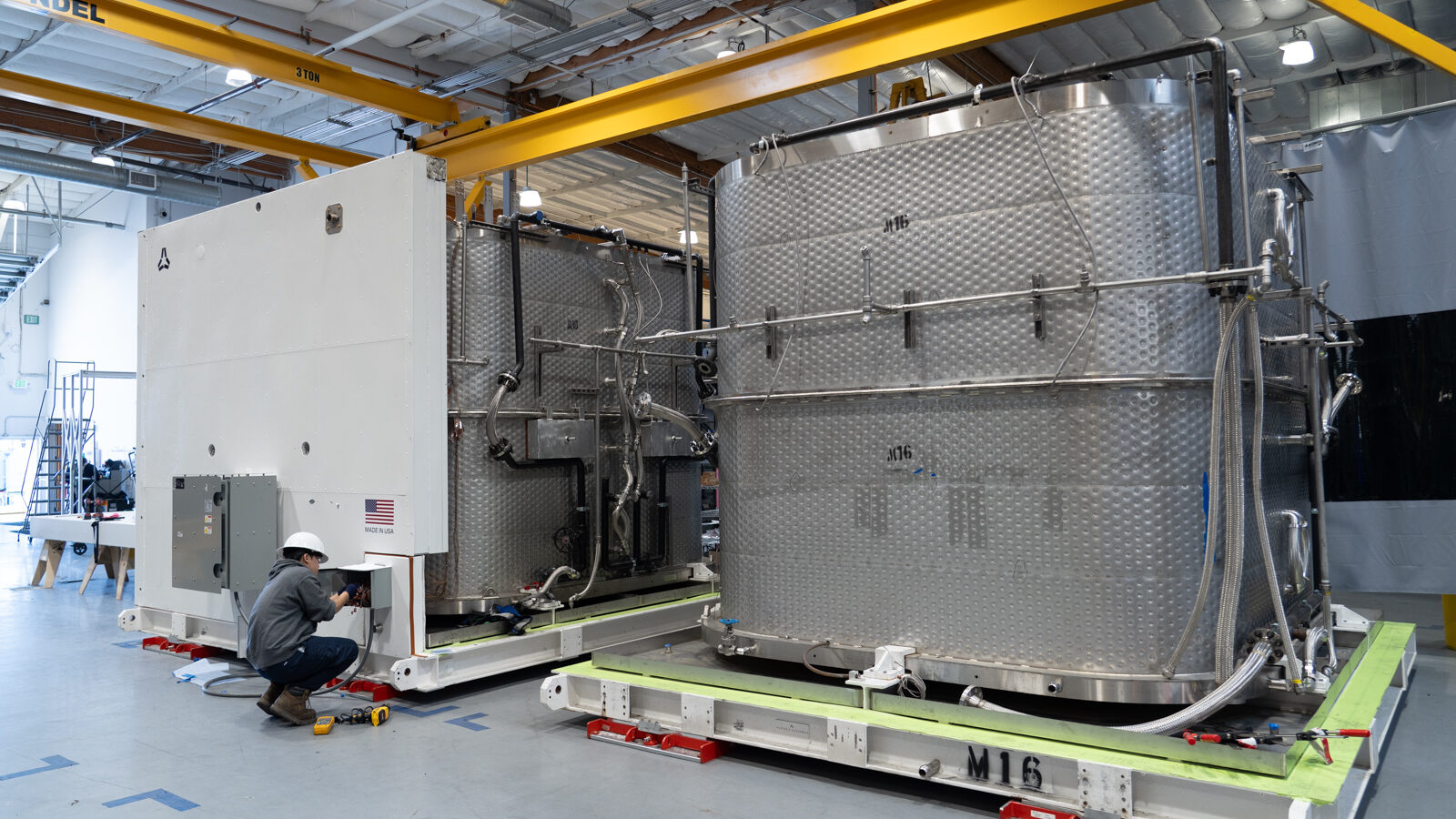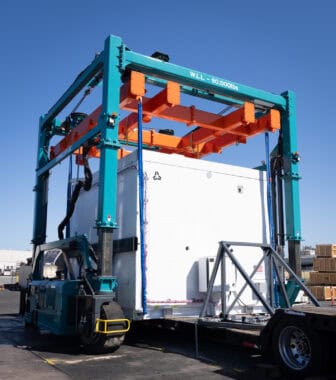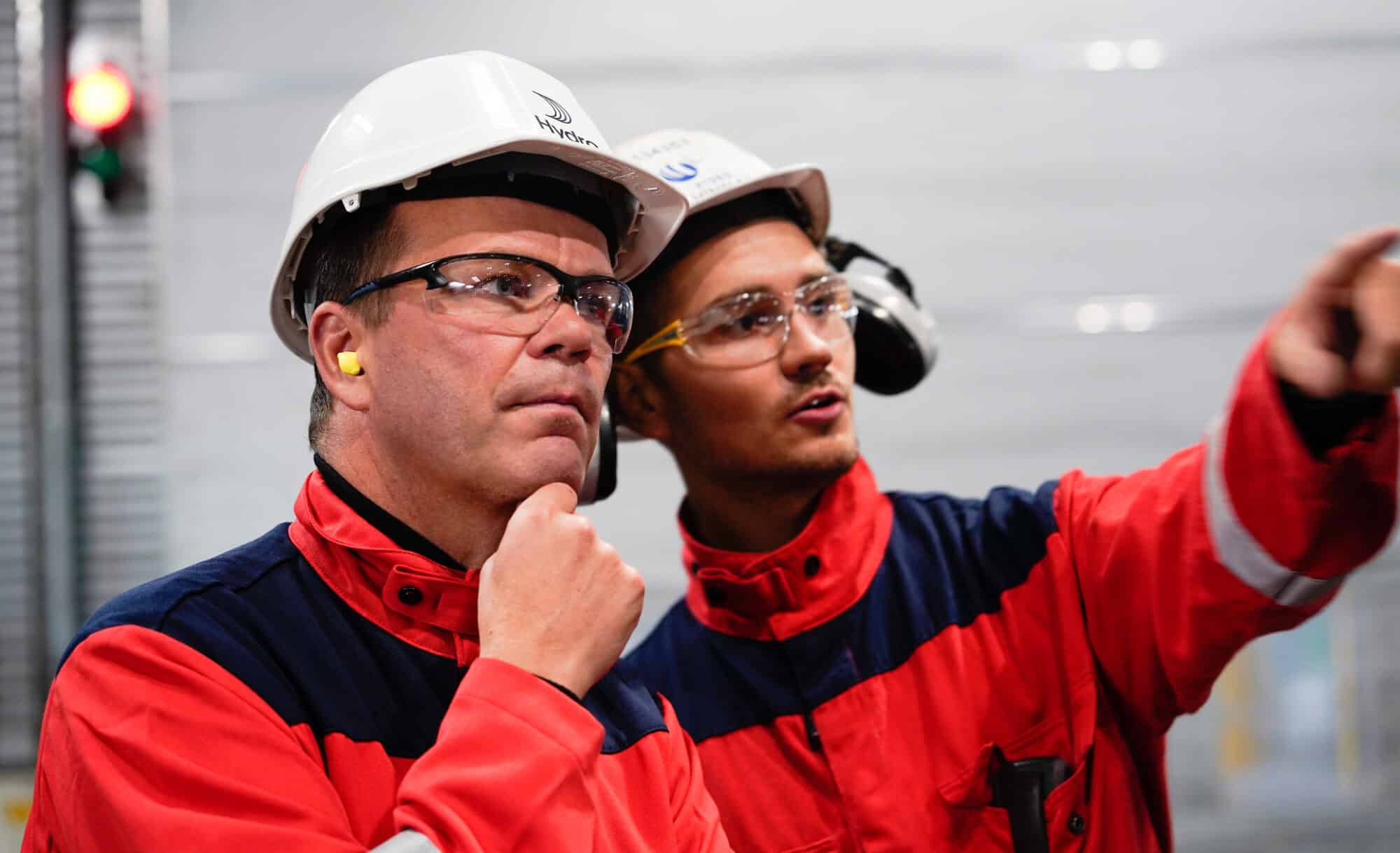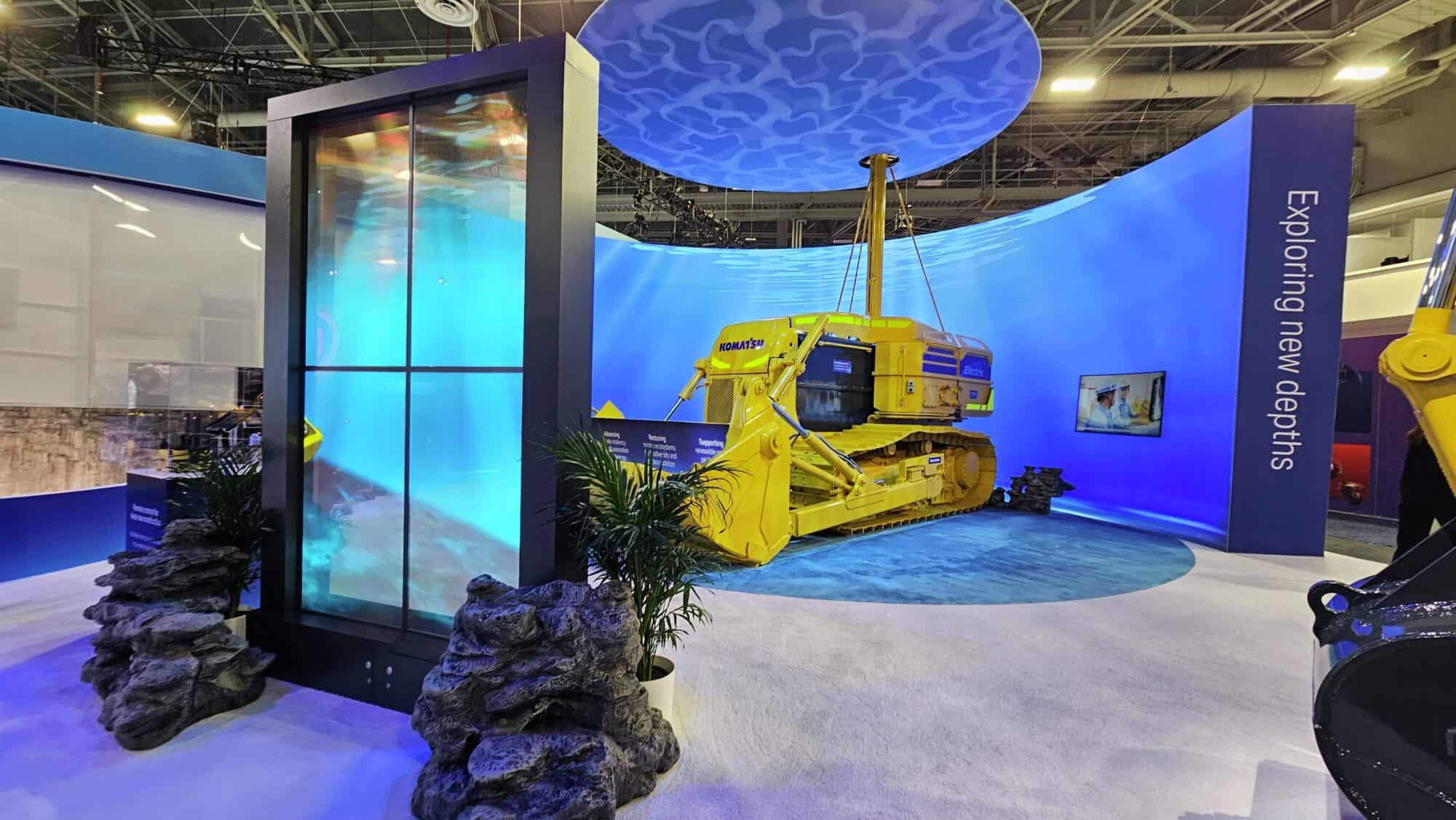Milo’s Tea: From a Single Menu Item to a Household Name

What started as a menu item at a single burger restaurant has become a summer staple and a household name across the U.S.: Milo’s Tea.
What’s going on: “Today we’re a tea and lemonade company, but it didn’t start that way,” Milo’s Tea Company Chair and CEO Tricia Wallwork, a member of the NAM Board of Directors, told the “Today” show last week. “There actually was a guy named Milo, and he was my granddad.”
- After serving in World War II, Milo Carlton—who had “always had a passion for food” and had been a cook in the army—opened a burger restaurant in Birmingham, Alabama.
- His biggest hit? The eatery’s sweet tea. In 1946, Carlton and his family decided to start the beverage business.
- In 2022, the firm became the top-selling refrigerated tea brand in the U.S. It’s also the fastest-growing refrigerated lemonade brand.
A manufacturing powerhouse: In April, the beverage maker opened its fourth manufacturing site, a 10,000-square-foot brewing and packaging facility in Spartanburg County, South Carolina.
A major success story: Today Milo’s Tea is available for sale in all 50 states at more than 55,000 retail locations—but it remains family-owned. (It’s also a certified women-owned business.)
- When Wallwork took the helm in 2012, “we had [maybe] 40 people,” she said. Now, “we’re going to end this year with over 1,000.”
Making Milo proud: Still, despite its explosive success, the company—which will release a zero-sugar lemonade this year—is faithful to its roots.
- “It was my grandfather’s recipe, and it’s still the same formula we use today,” Wallwork told “Today’s” Kathy Park.
- “I think my grandparents would be so proud of the wonderful jobs we’ve been able to create and the many lives that we’ve been able to touch through our business and through our flavors and our brands.”
MLC Announces 2025 Manufacturing Leadership Award Winners

The NAM’s digital transformation division has announced the winners of this year’s Manufacturing Leadership Awards, accolades given to the most outstanding companies, teams and individuals leading manufacturing into the next era.
What’s going on: The Manufacturing Leadership Council named Celanese as its Large Enterprise Manufacturer of the Year, Pure & Gentle, Inc. as the winner in its Small-Medium Enterprise Manufacturer of the Year category and Besu Alemayehu of Merck & Co., Inc. as its 2025 Manufacturing Leader of the Year.
- The winners were announced last week at the MLC’s 2025 Manufacturing Leadership Awards Gala in Marco Island, Florida. It was the culmination of Rethink: Accelerating Digital Transformation in Manufacturing, the organization’s flagship event focused on strategies that advance digital transformation in manufacturing operations.
Why they were picked: Global chemistry company Celanese was chosen owing to its many achievements in digital transformation, including an artificial intelligence-powered digital platform that increases employee productivity and improves decision-making.
- Personal care product manufacturer Pure & Gentle won in its category for use of digital technology to monitor and boost sustainability, as well as for its creation of a work culture that fosters high levels of employee engagement.
- Merck Senior Vice President of Digital Manufacturing and Chief Digital and Technology Officer Alemayehu was recognized for leading digital initiatives that have increased business value and for partnering with senior leadership across the company in key functions.
There’s more: The award ceremony included a memorial tribute to former Lexmark Chief Sustainability Officer John D. Gagel, also a former member of the MLC Board of Governors, recognizing his lasting contributions to manufacturing and transformational leadership.
Our take: “The winners of the Manufacturing Leadership Awards represent the kind of bold and innovative thinking that will propel our industry into the future,” said NAM President and CEO Jay Timmons.
- “Every project and individual recognized in the Manufacturing Leadership Awards represents movement toward a future state of Manufacturing 4.0,” said MLC Founder, Executive Director and Vice President David R. Brousell.
Read more: See a full list of this year’s winners and finalists here.
Americans Are Saving for Retirement at Record Rates

Americans are socking away a record amount in their retirement accounts (The Wall Street Journal, subscription).
The details: “The average savings rate in 401(k) plans rose to a record high 14.3% of income in the first three months of this year, according to a Fidelity Investments analysis of the millions of accounts it manages.”
- That’s almost as much as the 15% annual savings rate that financial advisors recommend.
Upward trend: Average savings rates have increased from 13.5% in 2020.
- Meanwhile, older savers are putting in more than younger ones: “At Fidelity, baby boomers saved 17.2% on average, while generation X and millennials put away 15.4% and 13.5%, respectively.”
More 401(k)s: “About 70% of the private-sector workforce now has access” to a 401(k)—and many more companies are using automatic enrollment to increase participation.
Still at risk: However, “About 40% of U.S. households are now at risk of being unable to maintain their standard of living in retirement, according to Boston College’s Center for Retirement Research.”
The NAM’s contribution: The NAM is helping more manufacturing workers gain access to 401(k)s through its Manufacturers Retirement & 401(k) Savings Plan, which allows many companies to participate in one 401(k) plan.
- Retirement benefits are a huge draw for prospective workers, and the NAM 401(k) plan makes it much easier for small and medium-sized manufacturers to offer them.
- Read our interview with one manufacturing leader who saw a huge benefit from moving to the NAM 401(k) plan—and find out what she learned in the process.
AI Is Transforming Appalachia

The spotlight is on Western Pennsylvania—and EQT Corp.’s Toby Rice (The Washington Post, subscription).
What’s going on: The region’s plentiful natural gas is making it a crucial location as energy demand surges thanks to artificial intelligence. At the center of things is Toby Rice, president and CEO of energy company EQT Corp., the largest natural gas producer in the Appalachian Basin.
- “The size of [AI’s energy appetite] … it’s crazy,” Rice told opinion writer Salena Zito. “We are hearing estimates for power demand for AI that’s anywhere [from] 50 to 75 gigawatts of power, which is the equivalent of the power needed to power 10 to 15 New York Cities.”
- EQT is expected to be among the few natural gas providers in contention to support the switchover of the Homer City Generating Station, formerly Pennsylvania’s largest coal-fired power plant, “to natural gas to power an adjacent AI data center.”
From baseball to energy: Massachusetts native Rice wanted to make his career in professional baseball, but after he was passed over by Major League Baseball in college, his father suggested he go into the oil and gas industry.
- After moving to Texas, Rice started out working on an oil rig and eventually founded his own company, Rice Energy.
- “There was a lot of sweat along the way—he left Texas for Appalachia, and slowly grew Rice Energy from a no-name company to a top 10 producer of natural gas in the country.”
- It merged with EQT in 2017, creating America’s biggest independent producer of natural gas.
AI revolution—and opposition: “This is the biggest gas field in the world. This is the biggest energy source,” Rice told the Post. “Pittsburgh has powered, has been the ground zero, for the industrial revolutions that have taken place in this country. This AI revolution that’s taking place—no different.”
- However, AI growth has a sizable hurdle in its way in the form of opposition to natural gas.
- Said Rice: “We’re going to do everything we can to make sure they have all the energy they need to meet their AI aspirations. But we should still have the ability to build more infrastructure here.”
Manufacturing Activity Contracted Again in May

Business activity in the U.S. manufacturing sector declined for the third consecutive month in May—and at a slightly faster pace than in April (Institute for Supply Management).
What’s going on: The ISM Manufacturing Purchasing Managers Index edged down to 48.5 from 48.7 in April, reflecting continued weakness in demand and output.
- The New Orders Index rose slightly to 47.6 but remained in contraction for the fourth straight month. Only two of the six largest manufacturing sectors—petroleum and coal products and machinery—reported increased new orders.
- The Production Index ticked up to 45.4, still signaling contraction but at a slower pace.
Tariffs: The New Export Orders Index fell sharply to 40.1, the fastest pace of contraction since the COVID-19 pandemic, driven by slower global growth and new retaliatory tariffs on U.S.-manufactured goods.
- The Imports Index plunged to 39.9, as tariff-related price increases softened demand.
Jobs: The Employment Index rose modestly to 46.8 but remained in negative territory, suggesting continued job losses in manufacturing, though at a slower rate. Companies cited hiring freezes, layoffs and attrition amid uncertainty about future demand.
Prices: The Prices Index dipped slightly to 69.4, but remained elevated as steel, aluminum and other tariffed imports drove raw materials costs higher.
Inventories: Inventories fell back into contraction, dropping to 46.7 after a brief expansion in April, as firms stopped pulling forward deliveries and worked through earlier stockpiles built up ahead of tariff hikes.
A Manufacturer of Thermal Batteries Foresees an Industrial Boom

Antora Energy has an energy storage solution that could transform American manufacturing.
Antora builds thermal batteries that draw in locally produced electricity when it’s cheap and plentiful, converting it into heat stored in solid blocks of carbon. That energy can be delivered 24/7 to manufacturers as affordable, reliable energy. It’s a solution that is both modular and scalable, capable of serving small and large manufacturers alike.
- “We’re taking local energy from sources that are already near factories, at times when nobody else wants it and it would otherwise be wasted, and delivering it to American manufacturers,” said Antora Chief Operations Officer Justin Briggs. “It helps the factory become more competitive and stabilizes the local grid.”
Promoting U.S. energy: Antora’s batteries are manufactured in the U.S., using a domestic supply chain that avoids reliance on critical minerals (which must often be imported from China).
- The core of the battery is a form of inexpensive, low- to medium-grade graphite that is often a byproduct of coal mining or petroleum refining—an abundant resource across the U.S.
- “This is an opportunity to build a new technology class in the United States, with American materials and American supply chains,” said Briggs. “From the very beginning, we can build in America to support U.S. manufacturers.”
Creating jobs: The company is excited about the opportunity to create jobs in the United States—both at Antora itself and at the factories it supports.
- “We’re currently operating our first factory—a thermal battery gigafactory in San Jose, California—but that’s just the beginning,”
 said Briggs. “We’re already looking at a second factory, and more beyond that. We’re talking about being able to create a tremendous number of jobs around manufacturing hubs in the U.S.”
said Briggs. “We’re already looking at a second factory, and more beyond that. We’re talking about being able to create a tremendous number of jobs around manufacturing hubs in the U.S.”
Leading a renaissance: Antora sees the chance not only to build a new industry, but also to help support the next generation of American manufacturing and global technological leadership.
- “[The U.S. has] a chance for a renaissance—to tap into these domestic, abundant energy resources and support manufacturing industries, from concrete and steel to chips and data centers,” said Briggs. “These are all sectors that need energy, and we can supply it cost-effectively.”
Overcoming hurdles: Briggs notes that electricity markets have been around for a long time—and as a result, regulatory hurdles designed by long-ago policymakers can get in the way of this new technology.
- “The rules that govern electricity markets were not designed to contemplate scenarios like this one,” said Briggs. “Thermal batteries bring huge benefits to industry and the electric grid, but it can be hard to do from a regulatory perspective. We’re working with regulators to open up markets to support these great project opportunities.”
- “We’re just trying to make sure there aren’t antiquated rules in the way, so we can help make American industry more competitive.”
The bottom line: “This is an opportunity to drive a resurgence in American manufacturing through cheap energy,” said Briggs. “We’re putting this energy to use to repower American industry.”
How to Turbocharge Your R&D Leaders’ Careers

Every manufacturing executive has talented innovation leaders in the middle ranks of his or her company—managing a lab or department, but eager to move up. How do you prepare them for the next step in leadership so they can become the executives of tomorrow?
The Innovation Research Interchange, the NAM’s innovation division, offers a program designed to fill this gap in manufacturing professionals’ career development. The Shaping Innovation Leaders program, a partnership with Northwestern University, takes place over one packed week in June every year, and gives these midlevel managers a comprehensive introduction to business strategy, accounting and finance, organizational behavior, brand management and much more.
It’s the starter pack for those seeking to advance in the manufacturing industry. If you have someone on your team who could benefit, here’s what you need to know.
Who it’s for: The course is targeted at managers who have 10–15 years of experience and usually a graduate degree (most often a Ph.D.). These managers typically have several direct reports, oversee a lab or department and handle their own budgets.
- Past participants have worked at major manufacturers and related companies of all sectors, including Mars and FM Global.
What they’ll learn: This one-week intensive residential program—this year taking place June 8–13—features classes in the morning and afternoon, and also includes lunch, dinner and evening study and networking sessions. The courses include:
- Understanding Financial Statements;
- Evaluating Financial Results and Investment Projects;
- Financial Strategy and Cost of Capital;
- Driving Profitable Growth;
- Defending Your Brand; and,
- Law for Technical Executives.
Who’s teaching: The program is taught by eminent Northwestern faculty, including award-winning professors in marketing, management and finance.
- The program’s director, Adjunct Professor of Executive Education Marian Powers, boasts a long career of developing finance textbooks and software and specializes in teaching financial reporting and analysis to executives.
Inside the classroom: Every session of the program introduces participants to skills they may not have encountered in their technical positions. To take just one example, the High-Performance Negotiation Skills session introduces these managers to the framework and tactics that high-level leaders use in handling challenges.
- The course helps participants answer essential questions, such as “How should you think differently about negotiating as part of a team? How should you think about coalition-building in deals with many parties? How can you negotiate effectively from positions of weakness as well as strength?”
- To answer these questions, participants will examine case studies from the manufacturing industry. All the program’s sessions draw on real-world, relevant examples, ensuring that participants receive a useful toolkit of strategies.
What they’re saying: “Above all, this course illustrates a framework behind the motivations of our marketing and business/finance counterparts,” said one participant.
- “We no longer have the excuse of ‘why do they do it that way!?’ but rather, we can help those functions more effectively and proactively.”
Learn more and register: To learn more about the Shaping Innovation Leaders program or to register, visit the IRI site. This year’s program is still accepting applicants.
Hydro CEO: U.S. Must Reuse More Aluminum

Aluminum is “an essential part of everything we do”—so we need to recycle more of it.
That’s the message from leading global aluminum and renewable energy company Hydro, based in Oslo, Norway, whose president and CEO, Eivind Kallevik, recently sat down with the NAM to discuss the importance of the metal to the U.S.
Ubiquitous and crucial: “Construction, automobiles, [energy and technology]—you’ll find an enormous amount of aluminum in all of that,” Kallevik told us. “Going forward, it will just become increasingly important.”
An energy imperative: The U.S. has an aging electrical grid—a matter on which the NAM has long issued a clarion call—and modernizing and expanding it to meet Americans’ energy appetite will require aluminum, and a lot of it.
- “There’s going to be a huge increase in demand for electricity, especially given [the growth in construction of] data centers,” said Kallevik.
- For vehicles to become more energy-efficient, they must be lighter, and “the best way of doing that is more aluminum.”
A workhorse: One of the metal’s best qualities is its ability to withstand nearly endless reuse, Kallevik said.
- “You can recycle it infinitely. If you sort it the right way, you will be able to take it back to exactly the same state it was in in the first place.”
- Hydro—which has operations in 17 states and employs thousands of people in the U.S.—has multiple aluminum recycling facilities throughout the country, including at sites in Pennsylvania, Indiana, Illinois, Louisiana, California and Texas.
Keep more at home: “The more [aluminum] you can keep onshore, the better it is” for manufacturing, the economy in general and national security, Kallevik continued, adding that aluminum is critical in many U.S. defense applications.
- “If the U.S. kept more scrap exports onshore, we would reduce dependence on third parties” for the metal, he said.
Policy and supply chains: Because building is a heavily energy-intensive process, “energy policy is going to be increasingly important” in the coming years, Kallevik went on.
- “To protect its industries, the U.S. needs to ensure a fair regulatory framework to ensure that everybody in a global context competes on a level playing field,” he told the NAM.
- And when it comes to shoring up domestic supplies of aluminum, “to be more self-sufficient, the short-term solution for the U.S. is recycling,” he said. “Use what’s on the ground today, and for tomorrow, build capacity.”
Komatsu Expands and Innovates in the U.S.

Komatsu is a household name in Japan, but it’s making big moves in the U.S., too.
An all-of-the-above strategy: The commercial equipment maker, whose product catalogue runs the gamut from bulldozers and log loaders to autonomous haulage systems for mines, has launched multiple new innovations in recent months.
- In March, it introduced two new wheel loader models with improved fuel efficiency, more engine power and faster speeds.
- Last fall, Komatsu announced the launch of its first commercialized truck in its Power Agnostic series, vehicles capable of running on multiple fuel types, including diesel, hydrogen fuel cells and batteries.
Expansions underway: The global manufacturing giant is also expanding. In late 2024, it announced the construction of new facilities in Mesa, Arizona, and Peoria, Illinois.
- The Mesa project, slated for completion in 2026, will triple the square footage of the company’s current operational footprint in the area. The new sales and service facility will support the company’s mining customers throughout the Southwestern U.S.
- The Peoria expansion, which will replace an existing structure built in the 1970s, “will provide a collaborative space for engineering, sales, manufacturing, management and other functions,” according to the company. It will incorporate solar panels, stormwater reclamation systems and other sustainable technologies.
- A Komatsu 980E-5SE mining truck—winner of the Makers Madness contest’s “2024 Coolest Thing Made in Illinois” award from NAM state partner the Illinois Manufacturers’ Association—will be installed permanently outside the new Peoria building, which is scheduled to be finished by the end of 2025. The truck is manufactured at the site.
All in on mining: It’s fair to say Komatsu has a special focus on mining. In September, following its acquisition of German mining equipment manufacturer GHH Group GmbH, it showcased an expanded lineup of underground mining machinery at the MINExpo tradeshow in Las Vegas.
- It also recently unveiled its Modular ecosystem, an “interoperable mine management platform” to give mining customers access to all connected operational data in one place.
In the works: At the 2025 Consumer Electronics Show in Las Vegas in January, Komatsu exhibited some exciting in-development projects, including the prototype of an electric underwater bulldozer and artwork for planned construction machinery capable of working on the moon.
- The bulldozer—currently a concept vehicle with no planned introduction data as of yet—is a driverless, remote-controlled, electric-powered vehicle. This will be the second iteration of an underwater, battery-operated bulldozer from Komatsu; the first, the D155W, rolled off conveyor belts in Japan in the 1970s.
- “We’ve found that a lot of those machines built a long time ago are still in use,” said Komatsu Chief Digital Officer Michael Gidaspow. “People need this product, so they are keeping them running. Japan has a lot of coastline and coastal infrastructure to maintain, so this kind of dozer is so important there.” The planned update utilizes the latest technology, including automated blade control and teleoperation. It is powered by batteries, whereas the original had a diesel engine, Gidaspow added.
- Komatsu’s lunar construction machinery work is part of the Artemis Program aimed at getting humans back on the moon. “Life on the moon will demand roads, housing and other infrastructure, and lunar construction machines will be indispensable for building all this,” according to the company. “Once we only dreamed of humans living on the moon. Today we are making it a growing possibility.”
MLC Announces Finalists of Manufacturing Leadership Awards
 The Manufacturing Leadership Council, the NAM’s digital transformation division, has announced its list of finalists for the Manufacturing Leadership Awards—an honor given to world-class manufacturing companies and leaders who are revolutionizing the industry’s digital capabilities.
The Manufacturing Leadership Council, the NAM’s digital transformation division, has announced its list of finalists for the Manufacturing Leadership Awards—an honor given to world-class manufacturing companies and leaders who are revolutionizing the industry’s digital capabilities.
The big reveal: All finalists will be celebrated at the ML Awards gala on June 18 in San Marco Island, Florida, where the winners will be announced.
- The awards given include the Future of Manufacturing Award, the Manufacturing Leader of the Year, the Small/Medium Enterprise Manufacturer of the Year and Large Enterprise Manufacturer of the Year.
- Manufacturers can also win awards in several categories, including artificial intelligence vision and strategy, business model transformation, collaborative ecosystems and more.
- Award nominations were judged by a distinguished group of manufacturing leaders from across the industry.
- You can see a complete list of finalists here.
Rethink: Ahead of the Awards gala, the MLC will be hosting Rethink, where manufacturing leaders gather to learn best practices and make connections. The star-studded lineup includes:
- A keynote address on digital transformation from Siemens USA President and CEO Barbara Humpton;
- A talk on “How Wall Street Views Digital Transformation in Manufacturing” by Goldman Sachs Managing Director, Technology, Media and Telecommunications Group Jack Anstey;
- An inside look at Hershey’s digital factory, featuring The Hershey Company Vice President of Manufacturing and Engineering and MLC Board of Governors member Will Bonifant; and
- Numerous case studies, best practice sessions, networking opportunities and more.
The last word: “In times of business uncertainty, manufacturers find that investments in digital technology can pay off for improving efficiency and overall performance and innovation,” said MLC Founder, Vice President and Executive Director David Brousell. “In our 21st season of recognizing excellence in Manufacturing 4.0, it is remarkable to witness the innovative methodologies that manufacturers are continually developing to propel their digital transformation initiatives.”
Join us: If you’d like to learn more about Rethink or register for the conference, go here.
